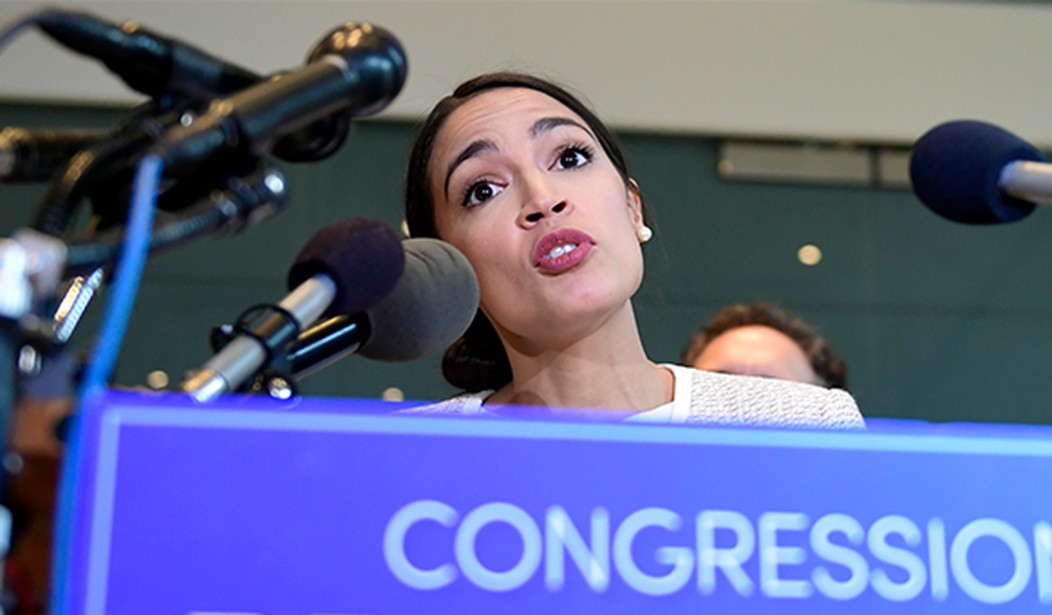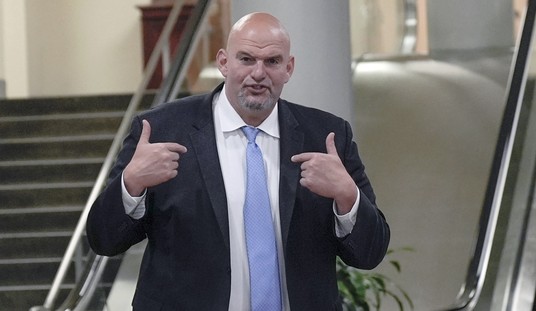Earlier this week, I devoted an entire post to addressing a tweet from Congresswoman-elect Alexandria Ocasio-Cortez, which appeared to endorse an idea to finance the majority of a government-run healthcare program by redirecting misallocated military spending. Virtually everything about her 'proposal,' and it may be too generous to apply that word in this particular context, was predicated on falsehoods or ignorance. The Washington Post's fact-checker waded into the controversy and slapped AOC with Four Pinocchios for her "$21 trillion mistake:"
Here's the Washington Post's fact check on @Ocasio2018's latest comment:
— Steve Guest (@SteveGuest) December 4, 2018
Alexandria Ocasio-Cortez’s $21 trillion mistake
"Swing and a miss! ... So we will award Four Pinocchios to Ocasio-Cortez."https://t.co/HmlZLWBKAr pic.twitter.com/ftHda7v8PE
$21 trillion -- oh, is that all? This passage is devastating:
Let’s put $21 trillion in context. The entire national debt is $21.8 trillion. According to the Congressional Budget Office, total defense spending from 1998 to 2015 was nearly $9 trillion. The CBO estimates $7 trillion in defense spending from 2019 to 2028. In other words, completely defunding the military for the next decade would yield only one-fifth of $32 trillion. That’s a much better way of illustrating the cost of Medicare-for-All.
As I said in my previous piece, Ocasio-Cortez's preposterously mistaken assertions are actually quite useful in that they're an indictment of her policy goals on this front. One of the primary conservative arguments against single-payer healthcare (though hardly the only one) is that the government-supremacist system would be prohibitively expensive, requiring onerous tax hikes on all American workers, families, and businesses. By mangling the facts so badly, AOC has helped showcase just how prohibitively expensive it would be. Taking the entire military budget to $0.00 for ten full years would only pay for one-fifth of single-payer's low-end cost estimate over the same decade. Clip that sentence and save it for the inevitable socialized healthcare debates that await us as Ocasio-Cortez's party drifts ever closer to adopting that plank into their official platform. Be sure to clip these comments and this mathematical analysis while you're at it. Relatedly, liberal blogger Ezra Klein, a big government advocate, is throwing a little cold water on leftists' dreams of implementing single-payer nationwide:
Recommended
The fact that single payer fell apart over financing *in Vermont* is really a key warning. I'd like to see more real discussion among its supporters about how that fate can be avoided. This @SarahKliff joint tells the tale well: https://t.co/0Xssq44Y4H
— Ezra Klein (@ezraklein) December 3, 2018
It "can be paid for" through stunning and unrealistic cuts to other priorities plus giant, across-the-board tax increases. And those potential savings he mentions aren't likely to materialize, either. But Klein is correct that despite the deep blue populace of Vermont affirmatively wanting single-payer, the state's liberal leaders could not make the finances work. And that's putting it mildly:
In 2011, [Gov.] Shumlin proudly signed a bill to establish a publicly financed, single-payer system. The law required Shumlin to submit a detailed financial plan by 2013. Shumlin missed the deadline, raising fears among supporters and critics alike that single-payer health care would cost much more than anticipated. Those fears were realized on Dec. 17, when Shumlin, two years late and just a month from narrowly winning reelection, released the financial analysis. The numbers were stunning. To implement single-payer, the analysis showed, it would cost $4.3 billion in 2017, with Vermont taxpayers picking up $2.6 billion and the federal government covering the rest. To put the figures into perspective, Vermont’s entire fiscal 2015 budget, including both state and federal funds, is about $4.9 billion. Shumlin’s office estimated the state would need to impose new personal income taxes of up to 9.5 percent, on top of current rates that range from 3.55 to 8.95 percent. Businesses would be hit with an 11.5 percent payroll tax, on top of 7.65 percent payroll taxes employer pay for Social Security and Medicare. And even those tax increases might not have been enough.
California is facing similarly daunting odds, under which the already debt-riddled state would need to more than double its annual budget to cover the costs of the program. Meanwhile, the blue-tinted swing state of Colorado overwhelmingly rejected the risky and expensive experiment in a 2016 referendum. Finally, I want to push back on this sentiment (which may or not even be serious, given the sarcastically hilarious source):
If you want to know what a smart play would be for Conservatives, it would be spending less time trying to zing AOC on Twitter and more time backing @EliseStefanik's efforts to build an army of strong candidates for us.
— Comfortably Smug (@ComfortablySmug) December 4, 2018
Yes, the GOP needs to diversify and relate to new generations of voters very differently moving forward. Those are political realities. But ignoring the highest-profile House Democratic freshman on major policy issues isn't a solution either. Bad ideas must be engaged and challenged. That's why conservatives should limit their criticisms to AOC's worst ideas, resist the temptation to empower her through superficial and petty mockery.
























Join the conversation as a VIP Member